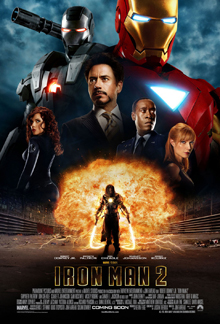I hit a bit of writer's block when searching for a topic for this blog post. It wasn't that I just hadn't experienced any mass media in the past weeks, on the contrary, I probably consume far too much. The new Prince of Persia movie surprisingly didn't suck. The Black Keys and LCD Soundsystem just came out with good albums. The Survivor season finale was exciting, even in its twentieth season. The problem is, that's about all I have to say about those things. They're good. I recommend them. Quality media, boring review.
So I came to look at this blog to see what else people had written about and search for some ideas. I found Dawson's post on Garfield especially entertaining. I hate Garfield, and all of what Dawson said couldn't have been more true. A part of me died when I found out Bill Murray starred in Garfield: The Movie. You're dead to me, Bill.
Anyway, this review is not also about Garfield, and definitely not about Bill Murray. It's about what you could call a Garfield spin-off: www.garfieldminusgarfield.net. The concept is simple: Dan Walsh takes Jim Davis' strips and edits out Garfield, Odie, and all of their dialogue. Let's take a look at the most recent one:
(If the image is cut-off, click it to see the whole thing)
In this twisted version of the "classic" comic, we see Jon Arbuckle not as your typical suburban man with a particularly zany pet, but instead as a sufferer of depression, pessimism, and sometimes schizophrenia who is engaged in a constant battle against the crushing unexcitement of every day life in the modern world.
Dawson notes that often Davis includes far too much explanation, which is apt considering how well Garfield Minus Garfield portrays its protagonist - often with what most would consider not enough explanation. In this strip, we are left to wonder what is going through Jon's mind in the second panel that causes him to retreat back to his depression after his brief flash of optimism in the first? Maybe he has realized that very few of those hopes and dreams are likely to come true. Many kids hope to be astronauts; dream of traveling the world. Most of them will work in cubicles, filling out spreadsheets from 9 to 5, so that they may live in their modest, bland apartment that is identical to all the ones next to it. They will vacation in Disneyland. They will not be the first person to walk on Mars. Jon knows this. Jim Davis doesn't know it, but Jon does. Jon lives it.
Every so often, Jon's abject loneliness and existential angst get the better of him, and he cracks. He goes completely insane and breaks out in a random bout of schizophrenia. These are perhaps at once the most hilarious and most depressing strips. At first we may laugh at the pure absurdity of it, but then we realize that Jon is seriously mentally unstable. This is him at his rock-bottom, and it is terrifying. No one traumatic event has brought him to this state; instead it is the sum total of every day of his life spent alone, bored, and hopeless. Sartre had it wrong. Hell is not other people, hell is no other people.
This isn't totally a losing battle, though! Jon has his good days too, just like anyone else. Here we see him full of optimism, ready to tackle the day, ready to live life to its fullest! But calling it a bittersweet victory is an understatement. We know that, even if he has managed to convince himself of a brighter future for these three mere frames of his life, it is unlikely that good things actually are on their way. We know Jon isn't about to make a new friend. His dreams aren't about to come true. But still, he believes they will for a moment, and these moments, however constructed and false, are still worth cherishing in Jon's otherwise miserable existence.
Now maybe I'm totally off-base here. Maybe this is just Jon's home life and he does have an interesting job and sometimes hangs out with a few buddies after work. Maybe he's just a little angsty and nihilistic when he's by himself at home. Or maybe there's no real story here at all. Remember, this is all unintentional. The author, or maybe more accurately, "curator" of this comic only removes Garfield. Walsh does not write or draw anything new. But it's precisely the fact that there is no inherent, explicit narrative or character definition that makes this comic so brilliant. The readers are free to come up with their own ideas of the specifics of Jon's struggle, and then further figure out how each update fits into that story. It's the lack of spelling-it-out and sometimes total incoherency that make Jon such a much more compelling and realistic character. We can empathize and apply his struggles to our own. Every once in a while, everyone gets bogged-down, burnt-out, and depressed.

Keep your head up, Jon, literally and figuratively.
-Joe Kelley


































